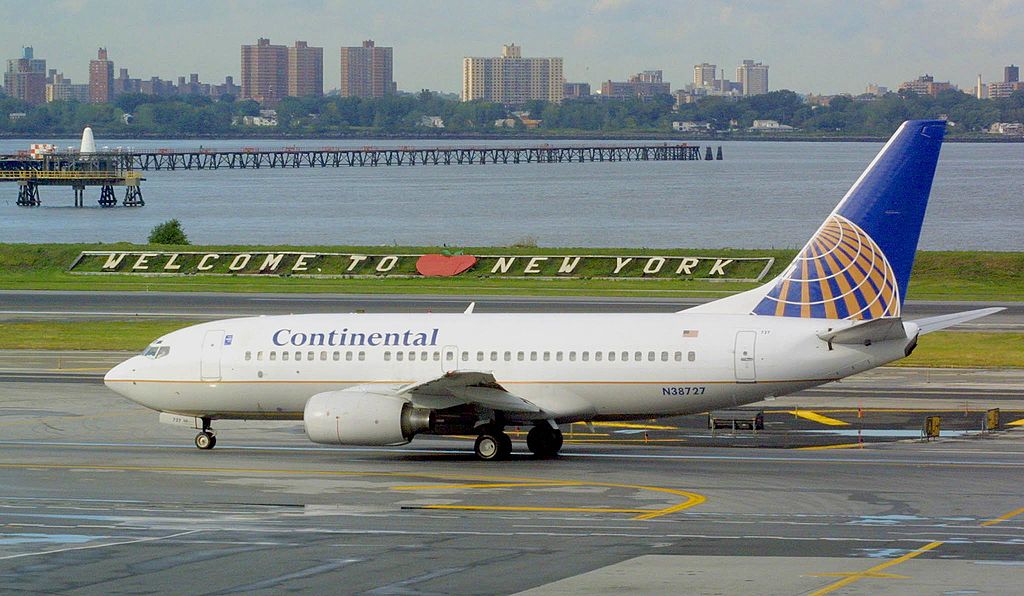
The aviation sector was among the hardest hit globally by the spread of Covid-19, and the US was no exception.
With airlines failing and traffic reducing drastically – if not stopping altogether at certain times – both existing and new projects suffered from severe delays, making investors pause their allocation plans into the sector.
Fast-forward two years, and traffic has resumed to almost pre-pandemic levels, especially in the West. While some airlines have recently been forced to cancel flights due to staff shortages caused by new Covid-19 cases, the aviation sector seems to have rebounded.
Before the pandemic, the US was experiencing what seemed to be the beginning of a flourishing period in terms of airport development with Los Angeles Airport – LAX (Midfield Concourse), New York’s LaGuardia Airport (Central Terminal), JFK International and Kansas City International Airport all having new facilities under construction.
Most of these projects have since resumed and are making progress, with industry players describing them as the success stories the industry needs to deliver much-needed infrastructure improvements to the rest of the US.
Potential and importance of private contribution
Only 1% of North America’s aviation sector is in private hands, according to data analysed by Modalis Infrastructure Partners’ data service AirportIR.
How well do you really know your competitors?
Access the most comprehensive Company Profiles on the market, powered by GlobalData. Save hours of research. Gain competitive edge.

Thank you!
Your download email will arrive shortly
Not ready to buy yet? Download a free sample
We are confident about the unique quality of our Company Profiles. However, we want you to make the most beneficial decision for your business, so we offer a free sample that you can download by submitting the below form
By GlobalDataDuring a presentation at the World Association of PPP Units & Professionals’ (WAPPP) conference on the outlook of airport public-private partnerships (PPP) in the US, CEO of Modalis Infrastructure Partners Curtis Grad presented data from Airports Council International arguing that the large investment gap combined with the extremely low level of private participation creates the perfect opportunity for private capital to be invested in the US aviation sector.
Indeed, 2016 data from the International Civil Aviation Organisation, represented in the chart below, confirms the very low level of private participation into North America’s aviation sector.
The potential, however, is significant. GlobalData’s pipeline data for the first quarter of 2022 shows that North America has the largest value of airport construction projects in the world, at $135bn.
US President Joe Biden’s £1.2trn infrastructure plan – which was approved by the House of Representatives in 2021 – has allocated $25bn to the aviation sector, which according to estimates leaves a significant gap to fill.
Given the strain that the pandemic and, more recently, soaring levels of inflation and the economic fallout from the war in Ukraine have put on governments, the scope for private capital’s participation is high.
There are several different structures that allow private investors to contribute to the development of new infrastructure, including operation and maintenance (O&M), project finance investment (PFI) and PPPs, or P3s as they are referred to in the US.
“The US has a pretty high level of PPP activity given the size of the country; however, North America as a whole has a very low participation rate by the private sector as the process normally tends to be run by a local authority,” David Baxter, a independent PPP consultant, said while hosting the WAPPP conference.
East Coast success stories
The airport PPPs in the US that saw significant participation from the private sector are located in the state of New York, where JFK New Terminal One (NTO) and LaGuardia Terminal B are located.
New Jersey is another state where the public and private sectors have worked well together to redevelop Newark Liberty – Terminal A, although under an O&M structure.
What is it that made these projects successful?
“First of all, New York is the largest aviation market in the US," says Amit Rikhy, president and CEO of the Carlyle Airport Group, one of the private partners involved in the development of JFK NTO, alongside JLC Infrastructure and Ullico. "JFK, LaGuardia and Newark are all managed by the Port Authority of New York and New Jersey and are structured in a way that has made it easy for it to bring in private investors,” he adds.
The presence of several terminals in each of those airports has meant that the Port Authority was able to structure various leases to allow private partnerships to be formed.
The project has an estimated cost of $9.5bn, all of which is funded by the private sector, making it the largest PPP in US history to date.
David-Olivier Tarac, manging director at international airport operator Groupe ADP’s ADP International Americas, says that the project presents a striking level of sophistication and that the Port Authority has been able to use the essence of the PPP model in terms of risk allocation.
“Clever risk allocation is at the core of the PPP model and the Port Authority has been very good at this by tailoring solutions to different airports," he says. "They made very clever use of the model in managing and delivering risk but also in taking the best that the private sector has to offer in terms of experience, innovation and ability to generate traffic. It is a fantastic case study.”
Fantastic case studies are what the US aviation industry needs to make sure it continues to attract the necessary private investor interest to bridge the investment gap it still faces.
“Project failures are the biggest issue for private participation into airport development in the US,” says Jorge Roberts, CEO of airport manager and operator Avports.
“Public authorities get really spooked by failed projects and this is mostly coming from misinformation and lack of education about PPPs. Us industry experts have probably not done a great job at educating as we are coming out of significant headwinds in the sector, but we need to continue to build success stories,” he adds.
Political will and educating the public
The public authority’s wariness towards failing projects is rooted in the perception of airports as community assets, which in turn makes political will another factor key in the success of private sector involvement.
“Aviation investment in the US is not just about capital," says Rikhy. "US airports are controlled locally and they are very much seen as community assets. For a local governor, deciding to privatise an airport is a highly political decision, so the rationale behind it must be very clear.”
The biggest worry is job losses, so educating the public about the opportunities that private investment can offer and making sure all parties are involved is key, Rikhy adds.
“You need to make sure that all stakeholders, from local authorities to service providers and constructors, are on board," he says. "It is an undertaking that takes a long time and unless you are a seasoned politician who has already survived a few political cycles, you are not willing to do that unless you can make a compelling case for privatisation.”
When an alignment of stakeholders’ interest is lacking, political risk becomes too high for PPPs to be successful. At the beginning of 2020, plans to privatise St Louis’s Lambert International Airport under a PPP scheme went bust due to opposition from residents, business leaders and government officials, despite strong interest from private investors.
Decentralisation of infrastructure management makes it difficult to align interests on the ground as well as put federal government funding to work efficiently by maximising its potential through private investors’ participation.
Local governments have also traditionally had access to what is perceived as 'cheap money' through the municipal bond market, another deterrent to seeing the point of having to pay a premium for private capital.
“Sometimes local authorities object to the involvement of private investors as they don’t want to pay 15% returns while they can access municipal funding at a much lower interest rate," says Tarac. "However, they forget that execution risk is not factored in municipal bonds’ rates, which is particularly important when it comes to infrastructure assets that may very well become obsolete or depreciate over time.”
This too comes down to better educating the public on the variety of financing options available. The need to educate the audience is also felt at government level.
The Build America Bureau (BAB), part of the government’s Department of Transportation, works as a point of contact for states, municipalities and sponsors seeking advice on the development of transport infrastructure. It provides access to financing and offers technical advice during the planning, financing, delivering and monitoring of projects. Among the various options, it also helps to explore ways to access private capital through PPPs.
“Although new legislation has recently been approved, setting more attractive terms, the take-up rate in the aviation sector has been very low compared with that seen in other transport sub-sectors,” says Morteza Farajian, executive director at the BAB.
“Educating some of the managing authorities about alternative financing tools is crucial,” he adds.
Short-term opportunities
As well as being a predominantly public play, airport infrastructure development in the US is also a very domestic one at present.
There is, however, some space for foreign direct investment to play a role and, to a degree, foreign companies have contributed to some recent projects.
This is the case with French greenfield infrastructure investor Meridiam, which is one of the partners of LaGuardia Gateway Partners, alongside Vantage Airport Group, Skanska (also a foreign investor) and JLC Infrastructure.
Foreign interest in the sector is certainly there as Spanish airport developer and operator Ferrovial Airports has entered into an agreement with the Carlyle Group to buy its stake in JFK NTO.
Vinci and Bouyegues are other examples of foreign companies that have contributed to airport infrastructure development in North America.
“The investment capital comes largely from US investment funds," says Jane Garvey, chair of Meridiam’s supervisory board. "Some of that funding may include foreign investment capital."
Looking ahead to future opportunities for private investment in US airports, she adds: “The potential is there, particularly for free-standing infrastructure in and around the airport ecosystem, including cargo facilities, parking garages and regional transit links from airports to downtown.”
The US aviation market may not yet be ripe for full-scale deployment of PPP funding, but strong potential is expected to come from airport-associated businesses in the short term.
“Some of these businesses, including, for instance, cargo facilities, parking spaces and transit links to the airport, are already partly contracted out to private owners, albeit not always through PPPs,” notes Steven Summers, Citi Group’s managing director of transportation infrastructure investment. “We have seen a lot of activity in this space over the past 12–18 months.”
Whether through PPPs, PFIs or O&Ms, private sector participation in the financing of airport development in the US is likely to increase in future, if only due to the sheer need for modernising this type of infrastructure across the country.
While it might start from airport-associated businesses or bespoke projects, the long-term success of the likes of JFK NTO and LaGuardia Terminal B is going to be crucial to convince the public of the role that private capital can play.








